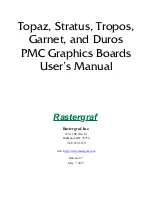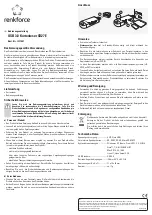
Glossary
X Series User Manual
G-4
ni.com
channel
Pin or wire lead to which yo
u
apply or from which yo
u
read the analog or
digital signal. Analog signals can be single-ended or differential. For digital
signals, yo
u
gro
u
p channels to form ports. Ports
u
s
u
ally consist of either
fo
u
r or eight digital channels.
clock
Hardware component that controls timing for reading from or writing to
gro
u
ps.
CMOS
Complementary metal-oxide semicond
u
ctor.
CMRR
Common-mode rejection ratio—A meas
u
re of the ability of a differential
amplifier to reject interference from a common-mode signal,
u
s
u
ally
expressed in decibels (dB).
common-mode
rejection
The ability of an electronic system to cancel any electronic noise pick-
u
p
that is common to both the positive and negative polarities of the inp
u
t leads
to the instr
u
ment front end. Common mode rejection is only a relevant
specification for systems having a balanced or differential inp
u
t.
common-mode signal
1. Any voltage present at the instr
u
mentation amplifier inp
u
ts with
respect to amplifier gro
u
nd.
2. The signal, relative to the instr
u
ment chassis or comp
u
ter’s gro
u
nd, of
the signals from a differential inp
u
t. This is often a noise signal, s
u
ch
as 50 or 60 Hz h
u
m.
connector
1. A device that provides electrical connection.
2. A fixt
u
re (either male or female) attached to a cable or chassis for
q
u
ickly making and breaking one or more circ
u
its. A symbol that
connects points on a flowchart.
convert rate
Reciprocal of the interchannel delay.
co
u
nt
The n
u
mber of events, s
u
ch as zero crossings, p
u
lses, or cycles.
co
u
nter
1. Software. A memory location
u
sed to store a co
u
nt of certain
occ
u
rrences.
2. Hardware. A circ
u
it that co
u
nts events. When it refers to an instr
u
ment,
it refers to a freq
u
ency co
u
nter.
co
u
nter/timer
A circ
u
it that co
u
nts external p
u
lses or clock p
u
lses (timing).
Artisan Technology Group - Quality Instrumentation ... Guaranteed | (888) 88-SOURCE | www.artisantg.com
















































